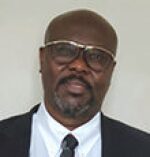Drilling-efficiency improvements must guarantee consistent reductions in project cost. The industry continues to pursue this critical requirement through different approaches—rate of penetration (ROP) maximization or cycle-time improvement. Recent advancements in technology, drilling processes, and applications characterization have begun to crystalize the differences and implications of the two methods. Most importantly, these efforts also identify crucial requirements and considerations that must be resolved as the move toward drilling analytics and automation gathers momentum.
Considerations and factors that influence project costs must be identified and analyzed from an operational perspective, instead of the usual mechanical evaluations that focus just on ROP. Recent advancements in technology development, field performance trends, and applications characterizations have established the effects and contributions of numerous other factors such as vibrations control, durability, borehole quality, directional challenges, downhole tool life, footage drilled, borehole verticality, and ROP on operational costs. The different factors have peculiar relationships with, and effects on, project costs and must not be analyzed in isolation. Consequently, solutions needed to address risks, failures, opportunities, and associated implications of these factors must be developed holistically. Actionable lookbacks and relational benchmarking that focuses on the “why” and “how” of events rather than the “what” are critical requirements of this process. This systematic and holistic approach promotes cycle-time improvement, with measurable positive effects on operational costs. The methodology ensures that problems are addressed at their source, while certifying relevance and functional compatibility of all drilling-system components.
Drilling analytics and automation must improve performance, with clear objectives to further drive down operational costs. To achieve these goals, critical pillars that focus on the holistic-solution approach and fast learning principles must be built. This strategy will promote process efficiency, explainable results, performance consistency, and fast adaptability by project teams.
The industry’s commitment to improve drilling efficiency and reduce operational costs is in full gear, yielding positive results, because of the new alignment and focus on cycle-time improvement. Holistic methodologies and solutions needed for this endeavor pose several questions that must be answered because clearer and complete pictures must be drawn for all challenges.
This Month’s Technical Papers
Drilling-System Optimization Leads to Expedited Wells Delivery
Bottomhole-Assembly Dynamics Software Helps Mitigate Twistoffs While Drilling
Machine Learning Assists Bit Selection and Optimization
Recommended Additional Reading
SPE 204129 When Slick Is Not Smooth: Bottomhole Assembly Selection and Its Effect on Wellbore Quality by Marc Willerth, Helmerich and Payne, et al.
SPE 207423 Novel Motor Adjusts Bend Setting Downhole, Addressing Today’s Directional Drilling Challenges by Rohan D’Souza, NOV, et al.
SPE 208541 Optimizing Bottomhole Assembly Design Criteria To Improve Mechanical Performance in Slimhole Drilling Environment by Stephen Fleming, Halliburton, et al.

Graham Mensa-Wilmot, SPE, is a drilling engineering technical director at XCIDrill Technology. He has more than 36 years of experience in drilling-applications research, downhole-tool development, bottomhole-assembly design and analysis, drilling mechanics, drilling-vibrations identification and remediation, drilling-system compatibility establishment, and drilling-performance improvement. Mensa-Wilmot recently served as Chevron’s MAXDRILL (Performance Drilling) project lead, having previously worked in engineering, research, and applications positions of increasing responsibility at Smith Technologies. His performance drilling experiences span deepwater, conventional, and unconventional assets. Mensa-Wilmot serves on the SPE/IADC Drilling Conference Program Committee, SPE Gulf Section Advisory Board, and the SPE Drilling and Completions Committee. He has authored several technical papers and holds several patents, primarily focusing on applications interpretation, field practices, drilling technologies, strategies, and processes that enhance operational efficiency. Mensa-Wilmot is an SPE Distinguished Lecturer and previously served as a drilling dynamics and performance drilling lecturer for the Petroleum Network Educational Conference series. He is an SPE Distinguished Member. Mensa-Wilmot holds an MS degree in drilling engineering from Romania’s Petroleum and Gas University of Ploiesti. He is a member of the JPT Editorial Review Board and can be reached at graham@xcidrill.com.

